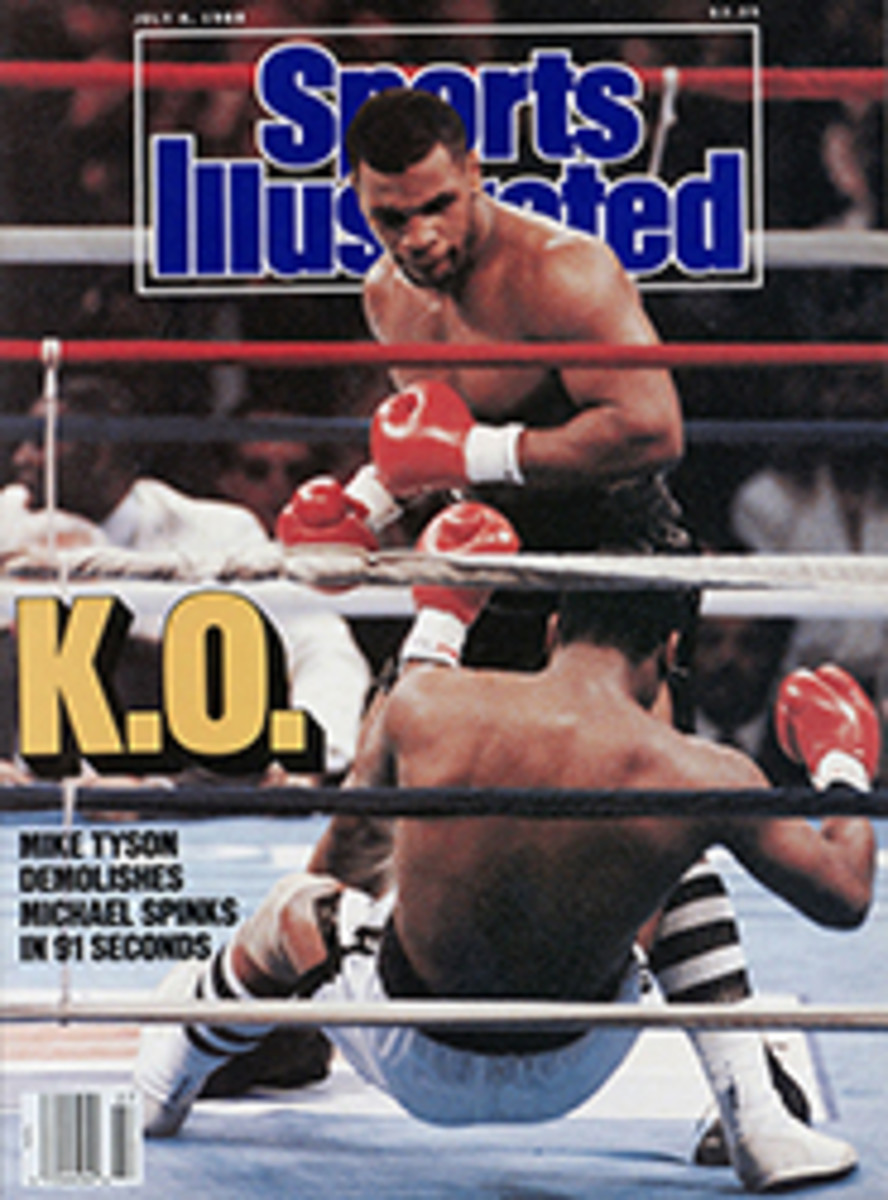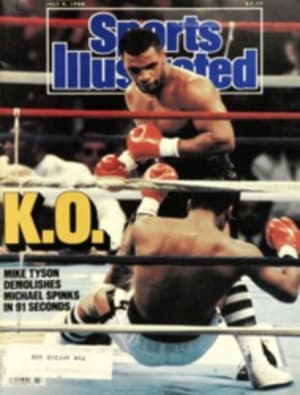
MEET A COUPLE OF CRAZIES
In a triathlon, someone usually pulls away and wins by, say, 2:51, as Mike Pigg did on Sunday in the men's flight of the Bud Light U.S. Triathlon Series race in Baltimore. Triathlons are seldom close. So it was noteworthy when Kirsten Hanssen and Jan Ripple battled toe-to-toe in Atlanta, in the race that preceded Baltimore's by a week on the USTS pro circuit. After a .9-mile open-water swim, a 24.8-mile bike leg and a 6.2-mile run, Ripple won by a step in the most exciting finish anyone could remember. So the triathlon world, a small but fanatically devoted community, eagerly looked toward the women's rematch in Baltimore.
Ripple, a 32-year-old mother of three from Baton Rouge—"That's my name on the tour, Janripple Motherofthree"—was enjoying the season of her life, having won three of the four USTS events to date on the 11-race circuit. But all the while she was nursing a painful stress fracture in her left leg. For six weeks she had done her training in a swimming pool at LSU. Her only dryland running came during the triathlons themselves.
Meanwhile, Hanssen, 26, the two-time USTS national champion, was sweating herself silly in Georgia. "I'm coming off a knee injury and wanted to do work in the hills, so I stayed in Atlanta to train," she said. "Great hills there. Great heat. Humid. It's so nice to really sweat a lot."
As you see, top triathletes are crazy. This explains why Ripple limped to the shore of the Gunpowder River at 7:30 a.m. on Sunday to do battle with Hanssen. Ripple was fourth out of the water in 20:21, and Hanssen was eighth in 20:40. Ripple boarded her bike, and winced. "I felt the leg when I climbed that very first hill," said Ripple, a former regional gymnastics champ, state 3-meter diving champ and state 50-and 100-yard dash champ. She picked her way to the front in short order, with Hanssen, the strongest biker among the women, nipping at her wheels.
"Jan and I did a lot of back and forth," said Hanssen later. "I'd pass her on the uphills, and she'd get me on the down. I just couldn't shake her." The women flew through the last hills and banked around the boutiques and crab-cake cafes of south Baltimore's Harbor-place. Ripple was first into the pit area, but lost time when she couldn't find her place in the bike racks.
Dead-even as they started the run, they matched strides for a mile. "I just tried to stay calm when we were running together," said Hanssen. "Then I noticed she was going 'huff' and 'phew.' I decided to go. I didn't want it to come down to a one-inch sprint again." As Hanssen strode ahead in the second mile, Ripple sagged ever so slightly. Her visor dipped once, twice. With five miles to go she dropped 100 yards off the pace. Hanssen turned right, going past Fort McHenry, and for the first time Ripple lost sight of her adversary. Hanssen's winning time of 2:07:19 earned her $2,500, the same first prize the men's champion received. In the homestretch Ripple was passed by Joy Hansen and limped home third.
"I'll rest and try to heal," said an exhausted Ripple after the race. "We'll check the bone scan to see how the leg is, see if we did any more harm. Then I'll do a lot of running in the water. On July 31 I'll do [the USTS race in] Chicago. I figure I'll do four or five more years of this."
They're all like that, these triathletes. The worst of them, and the best of them, is Pigg. A compulsive personality who trains four to seven hours a day in Arcata, Calif., he won last year's national championship and, like Ripple, had won three of the first four USTS events in 1988.
Pigg is an animal, and he proved it in Baltimore. "I got a bad start," he said of the swimming portion of the race. "This guy kept pushing me out to the right, and I wanted to go back to the left with the lead pack. I finally just swam right over the guy." Pigg was seventh coming out of the water, but grabbed the lead only three miles into the bike race. "They weren't pushing it when I joined the leaders, and I got anxious and just took off earlier. I looked back three times, and then I couldn't see them. I never looked back again."
Pigg is changing the rules. These two-hour triathlons—his time was 1:51:49—used to be considered endurance events, much like the longer Ironman races. Pigg has turned them into speed events, from start to finish. He's always pushing the pace. Each race he runs away and hides, and they won't catch him until they find him.
PHOTO
GEORGE TIEDEMANN
Hanssen said she loves to sweat.
PHOTO
GEORGE TIEDEMANN
Ripple, with a stress fracture that had precluded dryland training, limped home third.

